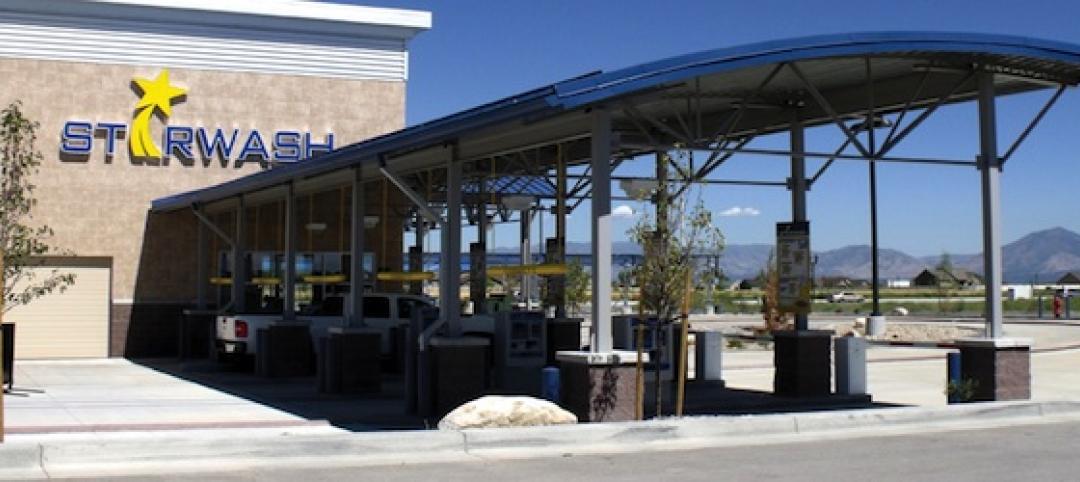The U.S. Environmental Protection Agency will provide 38 grant recipients with nearly $160 million to support efforts to report and reduce climate pollution from the manufacturing of construction materials and products.
The grants will be awarded to businesses, universities, and nonprofit organizations to help disclose the environmental impacts associated with manufacturing concrete, asphalt, glass, steel, wood, and other materials. The grants will support the Federal Buy Clean Initiative, which leverages the U.S. government’s position as the largest purchaser on Earth to catalyze demand for clean construction materials used in federal buildings, highways, and infrastructure projects.
Ranging from $250,000 to $10 million, the grants will help businesses develop environmental product declarations (EPDs) that show environmental impacts across the life of a product and can catalyze more sustainable purchasing decisions by allowing buyers to compare products. Investments in data and tools will make high-quality EPDs available for 14 material categories, which include both new and salvaged or reused materials.
Grant recipients include:
• A company in Georgia that will report the emissions savings gained by switching from higher-carbon components in cement and concrete to recycled and innovative materials.
• A company in Maine that manufactures insulation made from wood fiber will track the quantity of energy and raw materials used in each of their processes.
• A nonprofit organization in Illinois that sells reused architectural materials will measure how much the salvaged materials reduce carbon emissions.
• A large insulation manufacturer based in Indiana will use grant funding to measure and report greenhouse gas emissions for their full product portfolio.
• A major university will use grant funds to research and document carbon emissions savings from reusing structural steel.
Related Stories
| Sep 16, 2010
Green recreation/wellness center targets physical, environmental health
The 151,000-sf recreation and wellness center at California State University’s Sacramento campus, called the WELL (for “wellness, education, leisure, lifestyle”), has a fitness center, café, indoor track, gymnasium, racquetball courts, educational and counseling space, the largest rock climbing wall in the CSU system.
| Sep 13, 2010
7 Ways to Economize on Steel Buildings
Two veteran structural engineers give you the lowdown on how to trim costs the next time you build with steel.
| Sep 13, 2010
Community college police, parking structure targets LEED Platinum
The San Diego Community College District's $1.555 billion construction program continues with groundbreaking for a 6,000-sf police substation and an 828-space, four-story parking structure at San Diego Miramar College.
| Sep 13, 2010
Campus housing fosters community connection
A 600,000-sf complex on the University of Washington's Seattle campus will include four residence halls for 1,650 students and a 100-seat cafe, 8,000-sf grocery store, and conference center with 200-seat auditorium for both student and community use.
| Sep 13, 2010
Second Time Around
A Building Team preserves the historic facade of a Broadway theater en route to creating the first green playhouse on the Great White Way.
| Sep 13, 2010
China's largest single-phase hospital planned for Shanghai
RTKL's Los Angles office is designing the Shanghai Changzheng New Pudong Hospital, which will be the largest new hospital built in China in a single phase.
| Sep 13, 2010
Data Centers Keeping Energy, Security in Check
Power consumption for data centers doubled from 2000 and 2006, and it is anticipated to double again by 2011, making these mission-critical facilities the nation's largest commercial user of electric power. With major technology companies investing heavily in new data centers, it's no wonder Building Teams see these mission-critical facilities as a golden opportunity, and why they are working hard to keep energy costs at data centers in check.
| Aug 11, 2010
Average annual pay increases at A/E/P firms continue to rise in 2010
Despite the economic challenges that many architecture, engineering, planning(A/E/P) & environmental consulting firms have faced in recent years, a large majority of firms continue to include pay increases for their staff in their annual budgets, according to a new report released by ZweigWhite. According to ZweigWhite's 2010 Policies, Procedures, and Benefits Survey of Architecture, Engineering, Planning & Environmental Consulting Firms, the average pay increase that A/E/P firms project that they will provide in 2010 has increased from 2009. ZweigWhite, March 2














